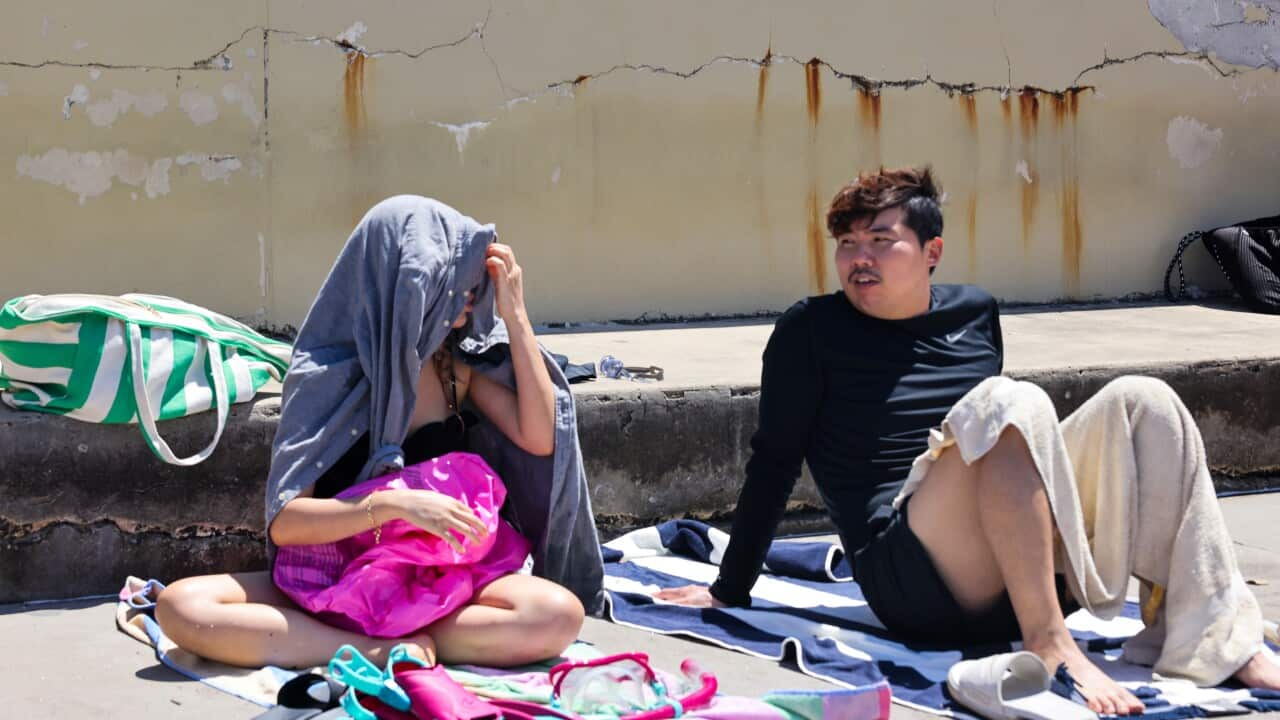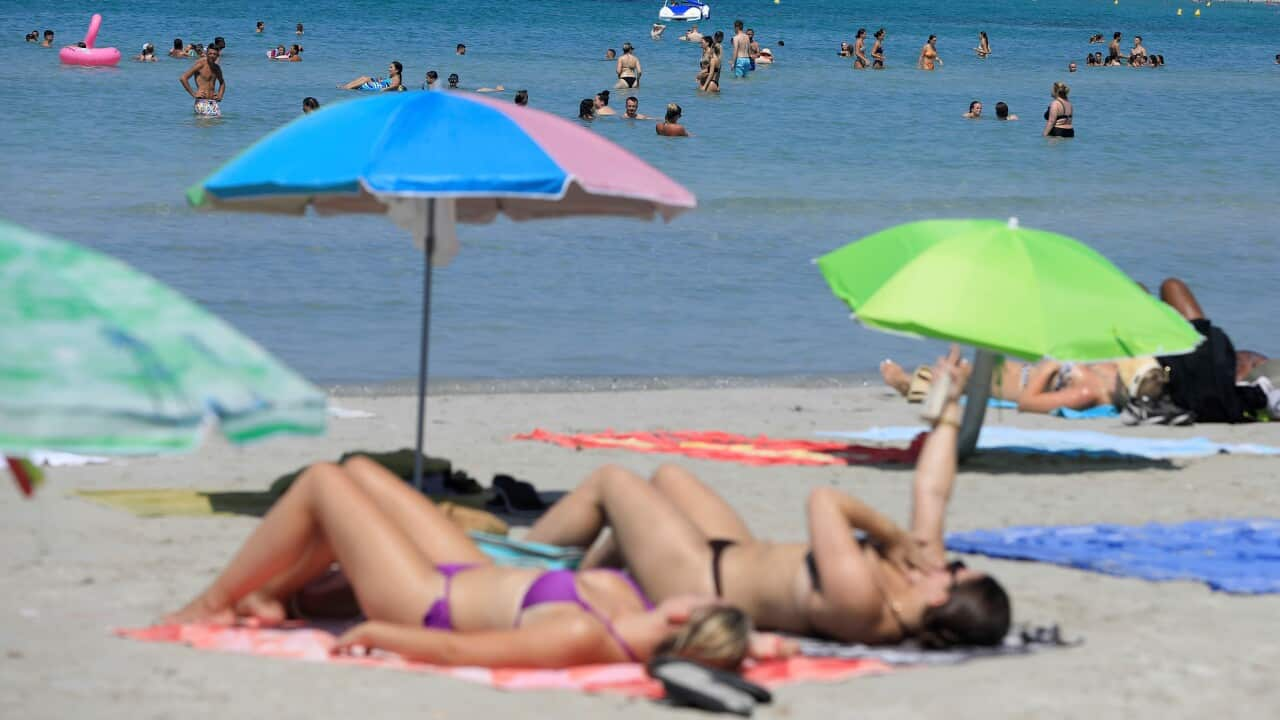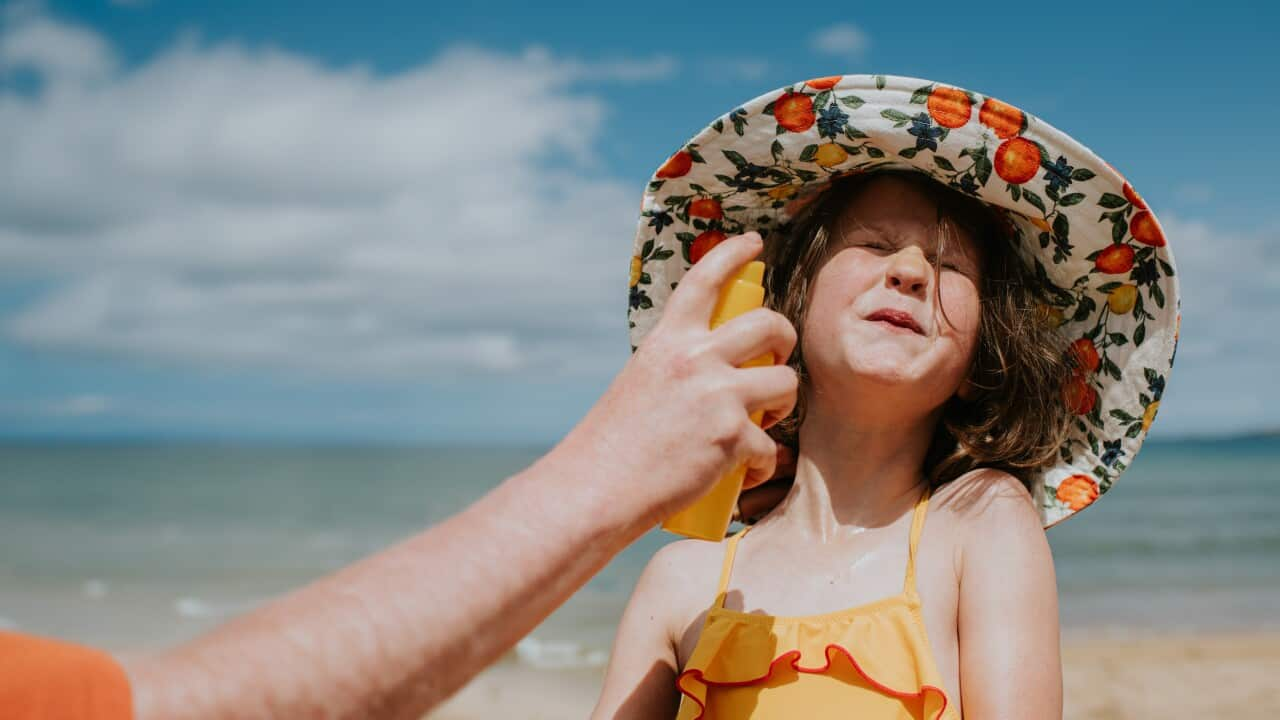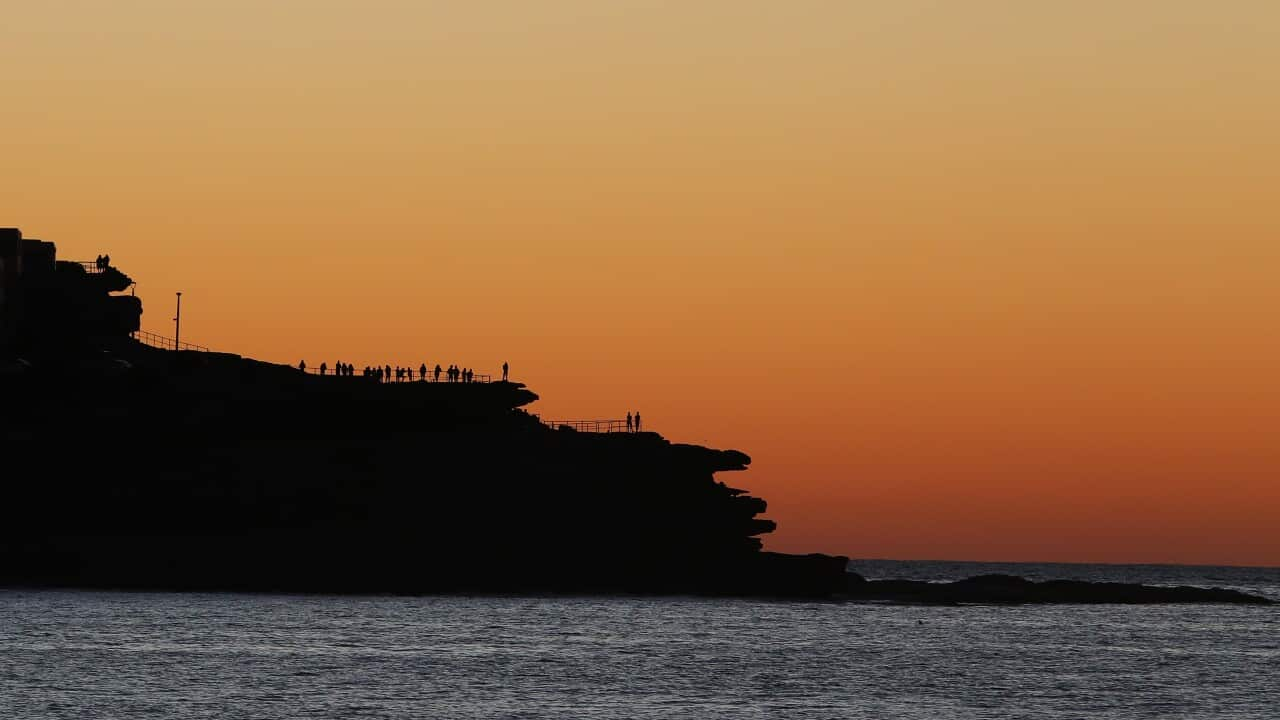It's invisible, you can't feel it, and it's deadly.
While we might spend our summers worrying about how rain is ruining our plans or how to brave a 35C day in the sun, there's one part of our forecast many of us are neglecting, and it could mean serious dangers to our health — Ultraviolet (UV) radiation.
Yep, while many of us have heard of UV, chances are that you might not be taking it as seriously as you should.
While we're conscious about sunburn and have steadily learnt as a nation to slip, slop, slap, some of us don't understand the UV Index and mistakenly believe temperature and sunshine are the strongest indicators for sun protection, according to health promotion program SunSmart.
But it isn't a hot day that causes us to get burnt and increase our risk of skin cancer — it's UV.
What is UV?
The sun produces different types of energy: visible light (or sunlight), infrared radiation (or heat), and UV radiation, which we can't see or feel.
Think of UV as invisible rays part of the sun's energy.
There are three types of UV radiation, categorised by wavelength.
- UVA is the most prevalent and causes sunburn, DNA damage to the skin, and skin cancer.
- UVB also causes skin damage and skin cancer, but the ozone prevents most of it from touching us.
- UVC is the most dangerous type of UV, but thankfully, it is completely absorbed by the ozone.
Exposure to UV can cause skin damage (including skin cancer), eye problems, immune system damage, and premature aging.
But UV is not heat or a hot summer's day.
While UV does come from the sun, Sally Blane, SunSmart manager at Cancer Council Western Australia, said it's important to differentiate UV radiation from infrared radiation — or heat.
"They're very different things. They're at the opposite end of the light spectrum and have different wavelengths that behave very differently," Blane told SBS News.
"So when you're outside in the sun, and you can feel that warmth, you might think you're getting sunburnt. But you actually can't. What you're feeling is heat or that infrared radiation.
"You can't see or feel UV, so you can't rely on heat or temperature to know when to protect your skin."
Why is it the 'invisible killer'?
Because we can't feel or see UV, it makes it awfully easy to forget about it.
But despite this, UV radiation causes up to 95 per cent of all skin cancers.
This means it's often been dubbed the 'invisible killer'.
"When UV radiation hits your skin, it gets into your DNA and damages it. But it also inhibits the repair of that DNA, so it causes this lasting damage in your skin cells," Blane said.
This damage can stay "dormant" for a long time and appear decades later as skin cancer.
So if you had a lot of exposure to UV radiation as a child or teenager, the damage could surface years later as skin cancer.

SunSmart's Sally Blane recommends using sun protection when UV levels are above 3. Source: SBS News
UV exposure level guide
The UV Index divides UV radiation levels into:
- Low (1-2)
- Moderate (3-5)
- High (6-7)
- Very high (8-10)
- Extreme (11 and above).
Blane recommends that if the UV levels are above three, that's the time to make sure you're well protected.
"Whenever UV levels are three or above, that's when that damage can occur," she said.
"Living in Australia, and particularly in summer, the UV gets into extreme levels. So what that means is that in summer and in as little as ten minutes, you can cause some lasting damage to your skin and that can lead to sunburn as well."
Midday is the worst time for UV exposure
UV always peaks in the middle of the day around 12pm.
"In summer in Australia, it's extreme pretty much across the entire country at around 1 to 2pm," Blane said.
"There are times at the beginning and end of the day when the UV is below three, and it's safe to go outside without any sun protection."

People can take some straightforward measures to protect themselves from UV rays. Source: Getty / NolanWynne/iStockphoto
"Forget about the temperature. Just think about when the UV index is three or above. That's when you need to protect your skin."
What's this summer's UV season looking like?
It might be tempting to just focus on how much rain or heatwaves you'll be dealing with this upcoming season.
But it's a good idea to get into the habit of regularly checking UV levels when you're heading out.
As UV is unrelated to temperature, it's actually pretty easy to predict what this summer's UV exposure will look like as it's pretty similar to other years.
"UV levels are really predictable," Blane explained.
"So in December and January, our UV levels are going to be extreme. Our UV levels are going to be extreme next January and December. It's really consistent, and that's because it's not related to temperature."
Blane said every summer is quite similar when it comes to UV levels, with the UV index regularly reaching 13-14 in capital cities in the middle of summer — rain, hail, or shine.
"It might be a stinking hot scorching summer, or it might be quite a cool and wet and mild summer, but the UV will still be exactly the same. That's not going to change," she said.
"The UV will drop in winter and it will get lower, but in large parts of Australia, it's actually still above three pretty much all year round.
"So it's really important to check the UV index, don't rely on the temperature, and cover up when the UV is three or above."
LISTEN TO

Keeping safe in the sun - whatever your skin type
SBS News
06:09
How can people protect themselves?
UV radiation is classified as a level-one carcinogen that causes cancer, existing in the same category as tobacco and asbestos.
But there are some pretty simple ways you can protect yourself, and it all comes down to the old motto, 'Slip, Slop, Slap'.
"You can protect yourself from that carcinogen and from that UV radiation by protecting your skin in those five ways — the old-school 'Slip, Slop, Slap, Seek and Slide' really prevents that UV from getting to your skin," she said.
"It prevents you from getting that DNA damage, and it prevents you from skin cancers later in life."
- Slip: Slip on sun-protective clothing like shirts with long sleeves.
- Slop: Slop on SPF 50+ (or higher) broad-spectrum, water-resistant sunscreen.
- Slap: Slap on a broad-brimmed hat.
- Seek: Seek shade in the form of trees, gazebos, umbrellas, or shelters.
- Slide: Slide on some sunglasses and a broad-brimmed hat.
Blane also recommends avoiding going outside while the UV peaks in the middle of the day. But if you are heading out between 10am and 3pm, try to avoid doing so for an extended period, or at the very least, make sure you cover up.
"You may also be surprised that sometimes at the end of the day, it can be really, really hot, but the UV is actually really low, and you can safely go outside without worrying about sunscreen or rashes or long sleeve clothes, and you can get on fine."
Blane recommends downloading the SunSmart app, which can tell you UV levels in your area and sends out notifications when UV levels are high.




